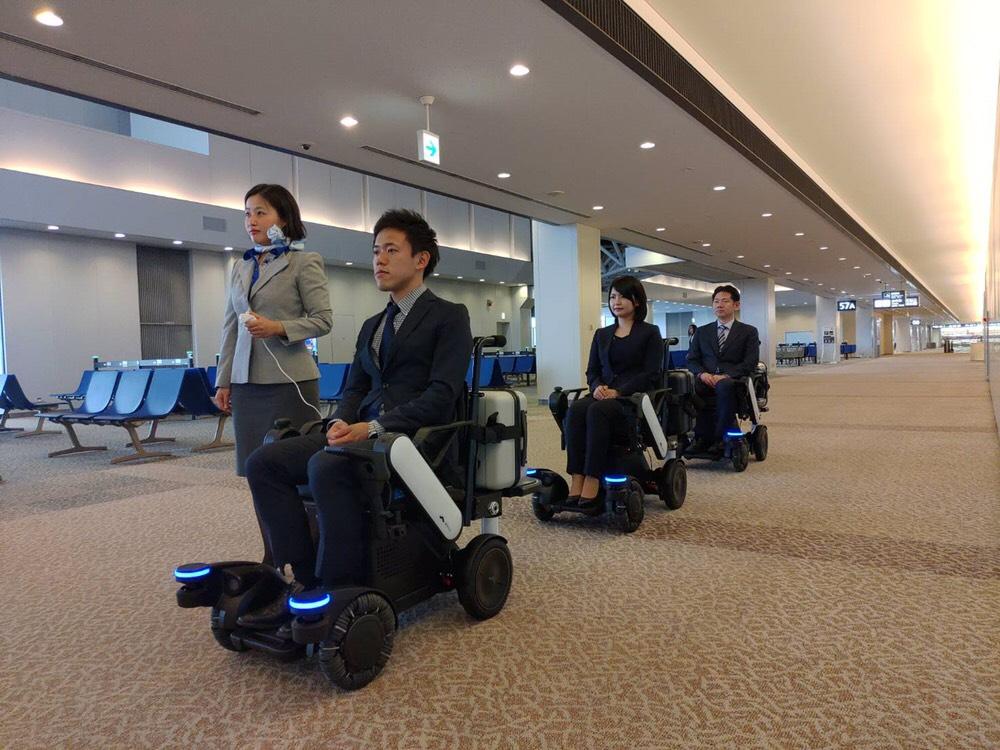
Here’s are some tools that may prove helpful in airports and other spaces.
Self-driving wheekchairs
Japan’s All Nippon Airways (ANA) and the Panasonic Corporation are testing self-driving electric wheelchairs at Tokyo’s Narita International Airport (NRT).
The wheelchairs are designed to navigate the airport independently.
As they move, they detect and avoid people and obstacles. And that could make them a useful mobility solution for passengers heading to connecting flights a ong distances away; a common issue in many sprawling international airports.
For the test, the wheelchairs will follow a leader to a common destination, with a staff person on hand to serve as a guide.
Smart luggage
What about their luggage?
Perhaps the self-navigating wheelchairs might be paired with self-driving suitcases or the smart suitcase being developed by researchers at Carnegie Mellon University.
Their smart suitcase is designed with blind users in mind and both helps to clear the way and warn of impending collisions. The researchers are also working on a wayfinding smartphone app to help people with visual disabilities navigate airport terminals.
The rolling suitcase sounds alarms (beeps) when users are headed for a collision with a pedestrian. The navigation app provides users with turn-by-turn audio instructions on how to reach a departure gate, a restroom or a restaurant.
Both proved effective in a pair of user studies conducted recently at PIT airport.
The smart suitcase, called BBeep, has a camera for tracking pedestrians in the user’s path.
“A [standard] rolling suitcase can help clear the way and can serve as an extended sensing mechanism for identifying changes in floor texture,” say project researchers. With its camera and system of beeps, “BBeep can also sound an alarm when collisions are imminent — both warning the user and alerting people in the area, enabling them to make room. “
Sound promising?